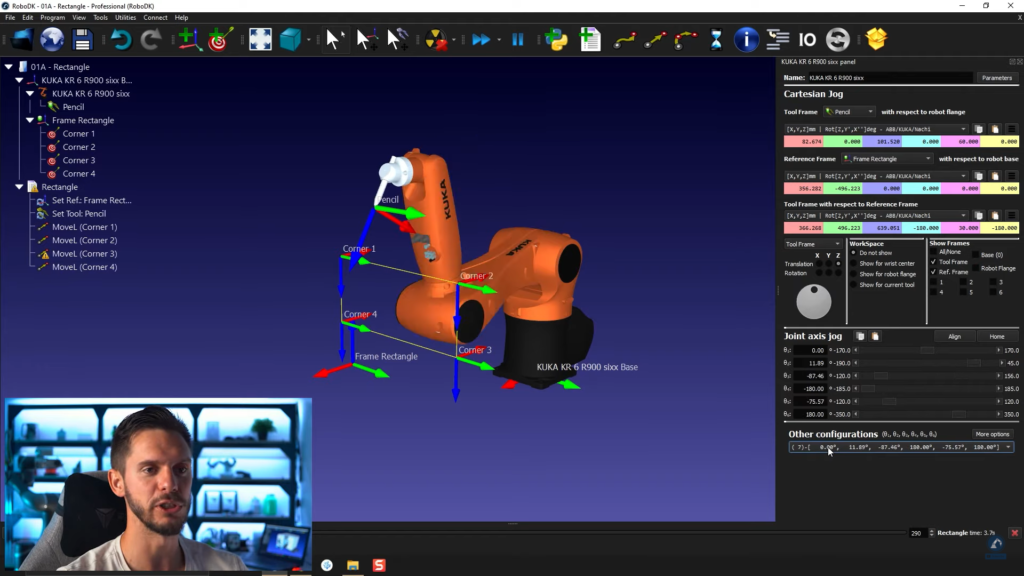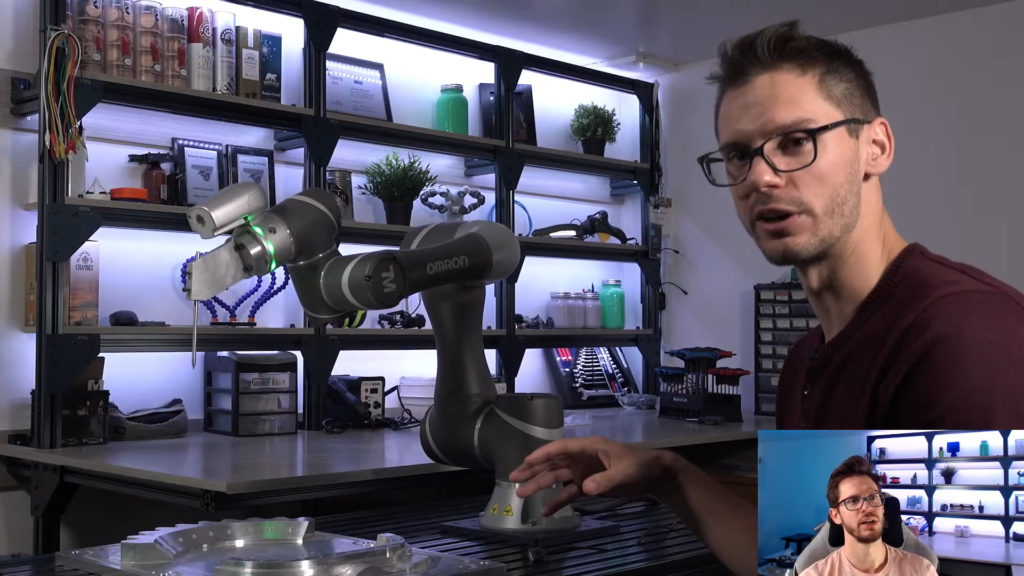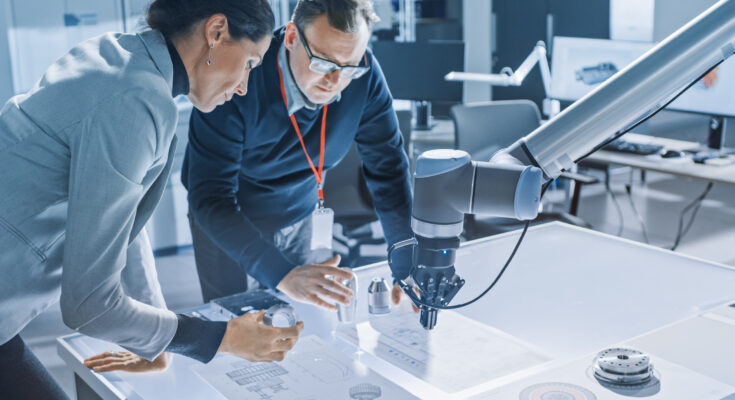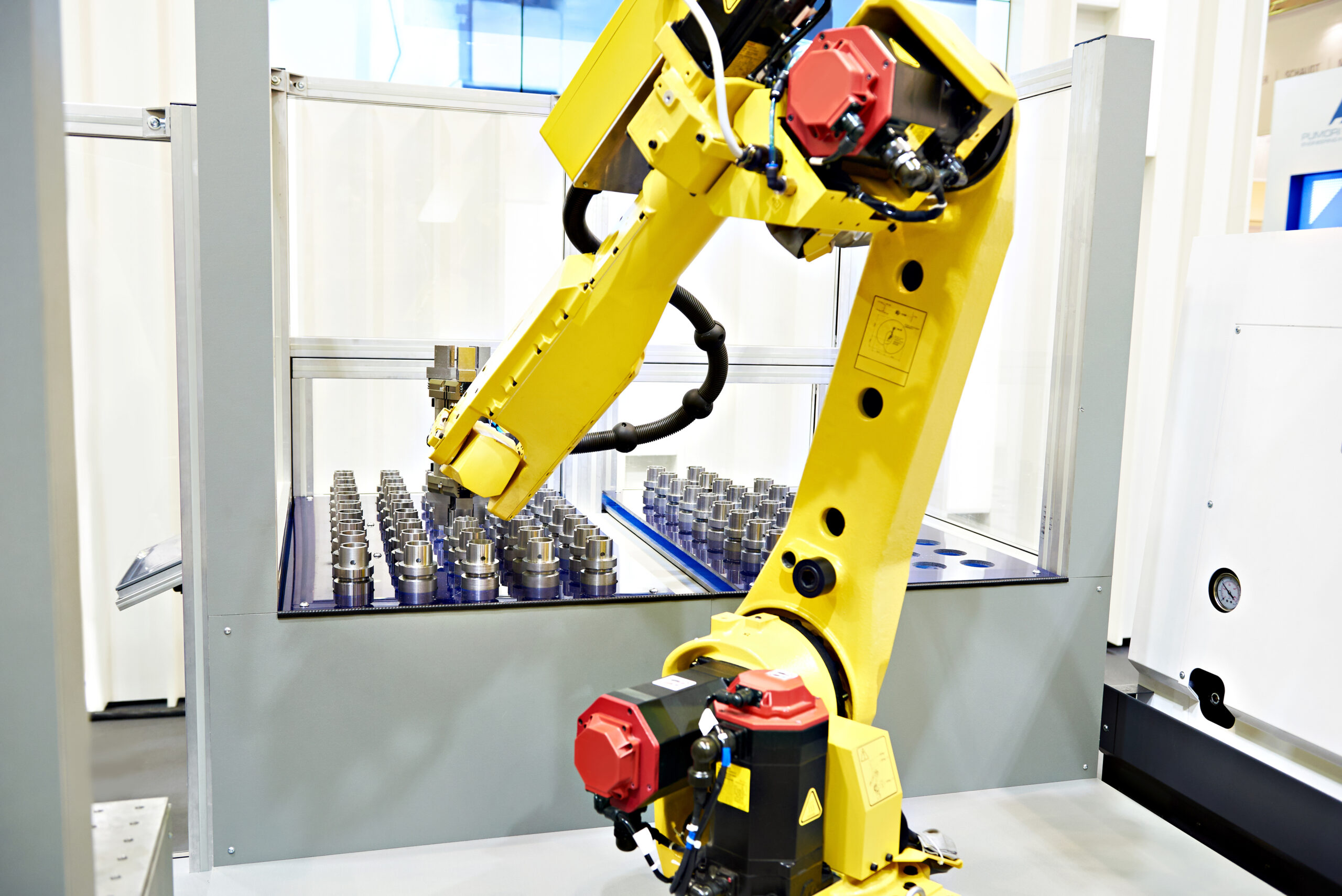How can you get started with robot training? You might imagine that robot programming courses would cost a lot. But, our free collection of courses is all you need to become an expert in robotic offline programming.
Robotics training has traditionally been quite expensive. In fact, each robot manufacturer has its own partner companies that specialize in training users for their specific robots.
But, what if you want to become an expert in programming any type of robot?
And what if you don’t have a lot of budget to spend on the training?
We have created a whole collection of free robot programming courses that you can access right now.
Here’s what you can learn!
20 Robot Programming Courses You Can Access for Free
Here is a list of the complete catalog, of free training courses that we have created at RoboDK.
Together, they form an entire course catalog with over 23 hours of training. This robot training guides you through the entire process of programming your robot, from the basics of using your programming environment to advanced path generation.

Basic Robot Programming in RoboDK Courses
These 9 basic courses introduce the RoboDK environment and set you up with all you need to start simulating a robot.
- RoboDK Simulation Environment — The introductory course gets you familiar with the RoboDK simulation environment. By the end, you’ll be able to navigate the environment and create basic robot programs.
- Creating a RoboDK Station — This course guides you through best practices for creating stations in a RoboDK simulation including effective use of the Robot Library and adding custom tools.
- Pick and place — This course addresses one of the most common robot applications. It demonstrates examples of how to create pick and place programs to move and organize boxes using subprograms.
- Simulation events — This course introduces simulation events for all non-robot aspects of your simulation such as conveyors, sensors, and cameras.
- 3D Objects — This course guides you through the process of importing and handling 3D models created in other programs.
- Basic Mechanism — This course is helpful if you are looking to create a robot that isn’t included in our Robot Library. It demonstrates how to create basic mechanisms like linear rails, turntables, conveyors, and more.
- Simulation tools — This course looks more deeply at the advanced simulation tools available in RoboDK. It includes collision detection, singularity detection, and multi-robot synchronization.
- Palletizing Plugin — This course teaches you how to use our dedicated plugin for easy programming of palletizing and depalletizing tasks.
- Flow control statement — This final basic course looks at the topic of program flow control. It demonstrates the program statements of IF and WHILE. Moreover, it shows how you can incorporate these with other elements of your robot program.
Advanced Path Generation Courses
These 5 advanced courses go deeper into path generation in RoboDK. They show how to get the most from some of RoboDK’s wizards.
- Advanced path generation Part 1 — This course goes deeper into how you can create paths for your robot program. It introduces concepts like setting an approach and retract distance and moving along a curve.
- Path importation — This course teaches you how to extract curves automatically from 3D model features and import robot paths from other software such as one of our CAD plugins or NC files.
- Advanced path generation Part 2 — This course expands on path generation by introducing 3 projects: point following, robot machining, and 3D printing.
- Curve tool — This course goes deeper into the function of RoboDK’s curve tool, showing how you can split, delete, and merge curves as well as other modifications you can make.
- Advanced path generation Part 3 — This final advanced path generation course teaches you how to modify the default parameters of RoboDK’s paths, change the tool orientation, and handle part positioning issues.
From Simulation to Reality: Programming Real Robots
The courses listed above have primarily involved using the simulation features of RoboDK. These following 5 courses are all about how you can move your program to physical robots.

- Robot program — This foundational course teaches you how to generate a program for your specific robot model, select the right post processor, and define the parameters for it.
- Robot driver — This course demonstrates real-time control of a robot within RoboDK, using an Omron TM robot as an example.
- Station accuracy and probing — This course covers how you can improve the accuracy of your robot by calibrating it using a probe.
- Robot accuracy — This course gives a general explanation of robot accuracy and shows some of the fundamental math behind accurate robot programming using a simulated robot as an example.
- Post-processor modification — This advanced course shows how you can edit RoboDK’s post-processors to gain full control over your specific robot’s functionality.
Advanced Programming
Finally, we have a course on how to use the RoboDK API for more advanced types of programming.
20. Python API for simulation — This course introduces the Python API. It guides you through program creation and robot simulation using Python.
Where to Access the Robot Training
You can access the RoboDK courses on our YouTube channel and find all training files here.
Indeed, the courses have been arranged into playlists, alongside other individual training videos for particular aspects of RoboDK’s functionality.

What other aspects of robot programming would you like to learn? Tell us in the comments below or join the discussion on LinkedIn, Twitter, Facebook, Instagram, or in the RoboDK Forum.. Also, check out our extensive video collection and subscribe to the RoboDK Youtube Channel




